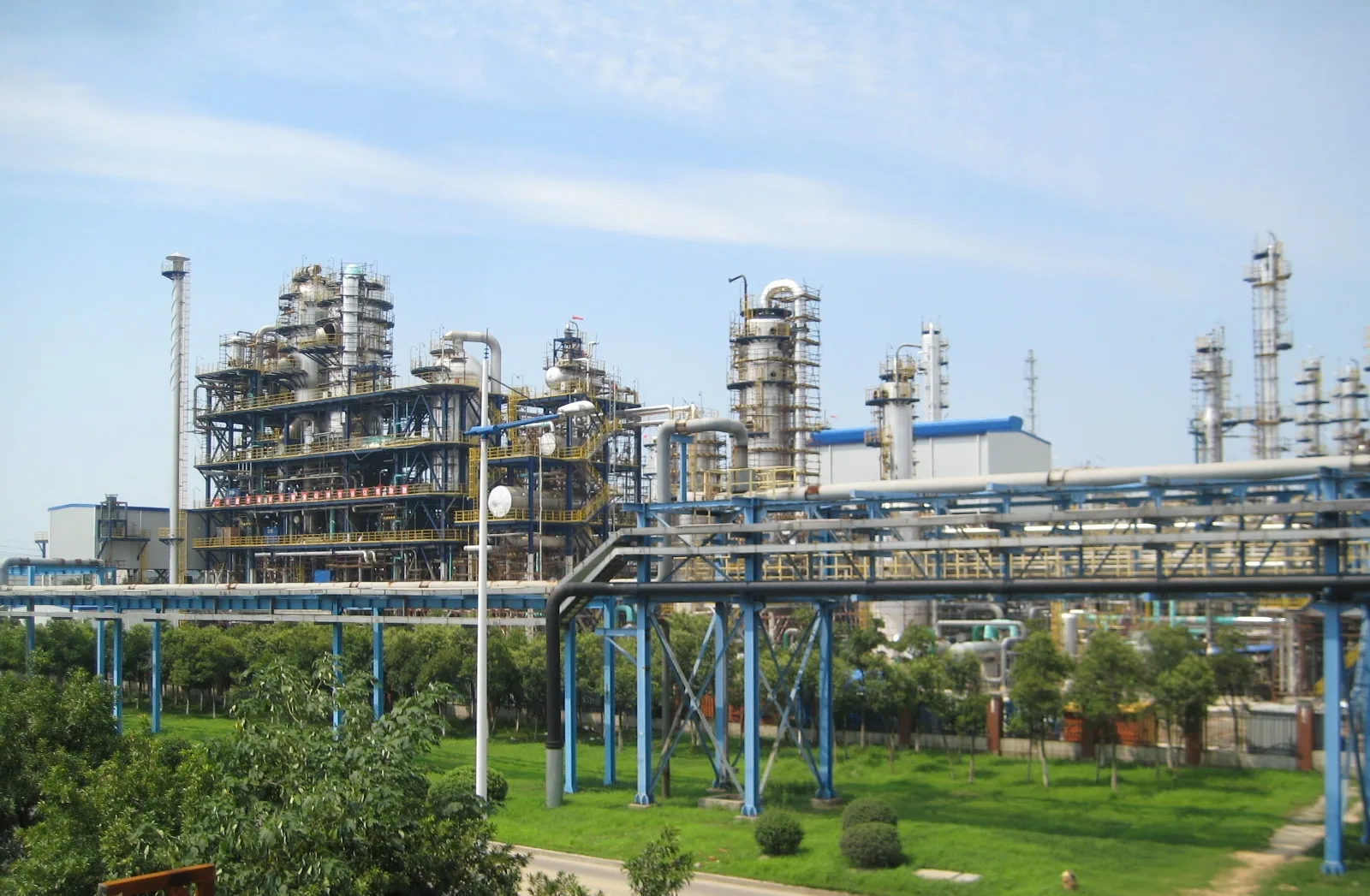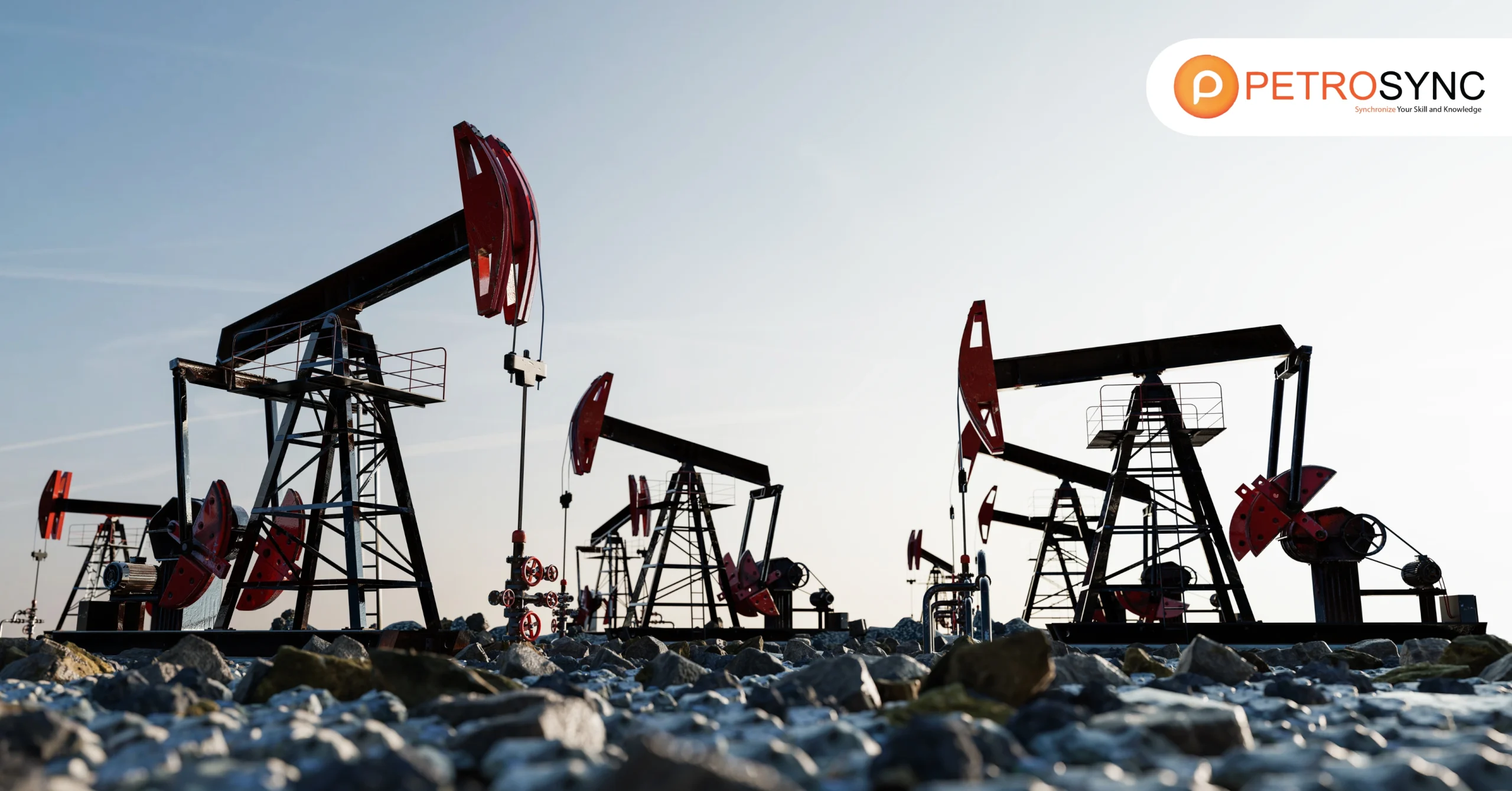Embarking on an exploration of petrochemical plant leads us into the intricate world where raw materials transform, creating various products we encounter daily. This article introduces the vital functions and operations of petrochemical plants.
What Is A Petrochemical Plant?
A petrochemical plant is a specialized industrial facility that manufactures chemical compounds known as petrochemicals. These chemicals are generated from petroleum or natural gas via a series of sophisticated methods that degrade hydrocarbons into simpler molecules. Petrochemicals are primarily produced by refining crude oil or processing natural gas to obtain valuable byproducts that are subsequently employed in a wide range of industries.
Petrochemical plants are highly sophisticated and operate on a wide range of scales, from small units producing small chemical batches to large, integrated complexes generating many products at the same time. Their operations are tightly related to the oil and gas industries since they rely on raw materials sourced directly from those sectors. Cracking, polymerization, and distillation are three major processes in a petrochemical plant that convert hydrocarbons into usable chemicals and compounds.
Petrochemical plants are vital in many industries, including manufacturing, transportation, agriculture, and healthcare. Many modern luxuries would not be possible without petrochemical compounds, underscoring the significance of these amenities in everyday life.
What Is An Example of A Petrochemical?
Petrochemical facilities produce a vast spectrum of petrochemicals, each serving a specific purpose in a variety of industries. One well-known example is ethylene, which is often regarded as the most important building block in the petrochemical sector. Ethylene is used to manufacture a range of items, including polyethylene (a form of plastic), ethylene oxide (an antifreeze and sterilizer), and ethylbenzene.
Another example is the manufacture of polypropylene, a versatile material used in packaging, textiles, and automotive parts. Propylene is also employed in the manufacture of compounds found in cosmetics, detergents, and other everyday products.
Petrochemical plants produce butadiene, benzene, and toluene, in addition to ethylene and propylene, all of which are important components of synthetic rubber, resins, and coatings. These petrochemicals are used in a wide range of products, from tires and rubber hoses to paints and adhesives, indicating the industry’s reach.
In conclusion, petrochemical factories are the lifeblood of numerous sectors, supplying the raw materials required to manufacture everyday items. These factories contribute to the global economy by extracting valuable compounds from oil and gas, enabling contemporary living.
What Is The Difference Between A Refinery and A Petrochemical Plant?
Refineries and petrochemical plants are distinct facilities within the oil and gas industry, each serving unique purposes. A refinery, also known as an oil refinery, focuses on processing crude oil to extract valuable products like gasoline, diesel, and jet fuel, refining and purifying crude oil for use as fuels and other essential applications.
Refineries primarily deal with fuel production, and their products include LPG (liquefied petroleum gas), gasoline (petrol), kerosene and jet fuel, diesel, fuel oils, and coke. In contrast, petrochemical plants specialize in using petroleum-based feedstocks to produce a wide array of chemical products, such as plastics, rubber, and various industrial chemicals. Petrochemicals are dedicated to creating intermediates used to produce industrial and consumer products.
What Are The Types of Petrochemicals Based on Their Chemical Structures?
Certainly, let’s delve into more details about each type of petrochemical-based on their chemical structures
1. Olefins (Alkenes)
Olefins are unsaturated hydrocarbons characterized by one or more carbon-carbon double bonds. Ethylene (C2H4) and propylene (C3H6) are primary olefins. Ethylene is a key component in the production of polyethylene, a widely used plastic. Propylene serves as a precursor for polypropylene, another essential polymer in various applications, including packaging materials.
2. Aromatics
Aromatics are cyclic hydrocarbons with alternating single and double bonds. Benzene (C6H6), toluene (C7H8), and xylene (C8H10) are common aromatic compounds. Benzene is a building block for the synthesis of numerous chemicals, including styrene, which is crucial in manufacturing polymers like polystyrene.
3. Synthesis Gas (Syngas)
Syngas is a mixture of carbon monoxide (CO) and hydrogen (H2). It is produced through processes like steam methane reforming. Syngas serves as a versatile intermediate for various chemical syntheses. For example, it can be converted into methanol, ammonia, and other chemicals.
4. Methane
Methane (CH4) is the simplest hydrocarbon and a major component of natural gas. It is utilized as a feedstock in the production of other chemicals. Methane can be converted into syngas, methanol, and ethylene, playing a crucial role in the petrochemical industry.
5. Methanol
Methanol (CH3OH) is an alcohol with applications as a solvent, fuel, and chemical feedstock. It is produced from natural gas or syngas. Methanol is a building block for the synthesis of formaldehyde, acetic acid, and other chemicals.
Each of these petrochemical types contributes to the production of various materials and products that are integral to our daily lives, from plastics and fibers to chemicals used in numerous industries. The versatility of these compounds highlights their importance in modern manufacturing and industrial processes.
How Does A Petrochemical Plant Operate?
In the operation of a petrochemical plant, various steps are meticulously followed.
1. Feedstock Reception
The first step involves receiving feedstocks, which are the raw materials essential for petrochemical production. These feedstocks can include naphtha, natural gas, and other hydrocarbons derived from the processing of crude oil or natural gas. The quality and composition of these feedstocks are assessed upon arrival.
2. Feedstock Preparation
Following reception, feedstocks undergo preparation. This phase involves processes like separation, purification, and treatment to eliminate impurities and unwanted components. The objective is to achieve a clean and consistent feedstock ready for subsequent chemical reactions.
3. Cracking or Reforming
High-temperature processes, such as cracking or reforming, are employed in this step. Cracking breaks down large hydrocarbons into smaller, more valuable ones. For instance, ethylene and propylene can be produced through cracking. The conditions are carefully controlled to optimize the desired chemical transformations.
4. Synthesis or Polymerization
Some petrochemical plants include units dedicated to the synthesis or polymerization of specific chemicals. For instance, ethylene can undergo polymerization to yield polyethylene, a commonly used plastic. Catalysts are often utilized to facilitate these chemical reactions under controlled conditions.
5. Distillation and Separation
Chemicals produced in previous steps are subjected to distillation and separation processes based on their boiling points. This helps in isolating specific components, ensuring the extraction of the desired petrochemical products.
6. Purification and Treatment
The next phase involves further purification to eliminate any remaining impurities or by-products. Various treatments, including filtration and chemical processes, are implemented to enhance the purity and quality of the final petrochemical products.
7. Product Blending
Depending on market demands and specific applications, different petrochemical products may undergo blending. This step allows manufacturers to customize product characteristics, meeting the diverse needs of downstream industries.
8. Storage and Distribution
Final petrochemical products are stored in tanks before being distributed to various industries. Proper storage ensures a consistent and reliable supply for downstream users, including manufacturers in sectors like plastics, textiles, and consumer goods.
9. Waste Management
Petrochemical plants prioritize waste management to handle by-products responsibly. Strategies may include recycling, treatment of waste streams, or adopting environmentally friendly disposal methods for materials that cannot be repurposed.
10. Quality Control and Monitoring
Rigorous quality control measures are integrated throughout the entire process. Continuous monitoring ensures that petrochemical products meet stringent standards, adhere to safety protocols, and comply with environmental regulations. This commitment to quality and safety is paramount in petrochemical plant operations.
The intricate and controlled nature of these processes allows petrochemical plants to produce a diverse range of materials crucial for various industries, contributing significantly to our daily lives and modern conveniences.
What Are Some Examples of Petrochemical Plants?
1. Ethylene Plant
Ethylene plants are a common type of petrochemical facility that specializes in the production of ethylene, a key building block for various plastics and chemicals. These plants use processes like steam cracking to break down hydrocarbons and derive ethylene.
An example of an ethylene plant is the Chevron Phillips Chemical’s Cedar Bayou Plant located in Baytown, Texas, USA. This facility plays a crucial role in producing ethylene, serving as a key player in the petrochemical industry.
2. Methanol Plant
Methanol plants focus on the production of methanol, a versatile chemical used in various applications, including as a solvent, fuel, and feedstock for other chemicals. These plants typically involve processes like steam methane reforming.
One notable methanol plant is the Natgasoline LLC Methanol Plant in Beaumont, Texas, USA. This plant utilizes advanced technologies to produce methanol, contributing to the global supply of this essential chemical.
3. Polyethylene Plant
Polyethylene plants specialize in the production of polyethylene, a widely used plastic. Through processes like polymerization, they transform ethylene into polyethylene, contributing to the manufacturing of packaging materials, containers, and more.
A prominent polyethylene plant is the Dow Chemical Company’s Freeport Plant in Freeport, Texas, USA. This facility is dedicated to the production of polyethylene, supporting the demand for various plastic products worldwide.
In conclusion, petrochemical plants play a vital role in our daily lives by producing essential chemicals that are the building blocks of countless products. From plastics and synthetic materials to fuels and various consumer goods, these plants contribute significantly to modern society’s needs.
As we rely on numerous items in our everyday routines, it’s crucial to recognize the integral part petrochemical plants play in providing the raw materials for these products. Their continuous operation ensures a steady supply of materials that contribute to the convenience, comfort, and progress of our contemporary way of life.
Credit header image: hydrocarbonprocessing.com

Results-oriented and thorough SEO specialist with extensive experience in conducting keyword research, developing and implementing digital website promotion strategies and plans, managing campaigns to develop company websites in the digital world, excellent knowledge of marketing techniques and principles, and attentive strong attention to detail.






